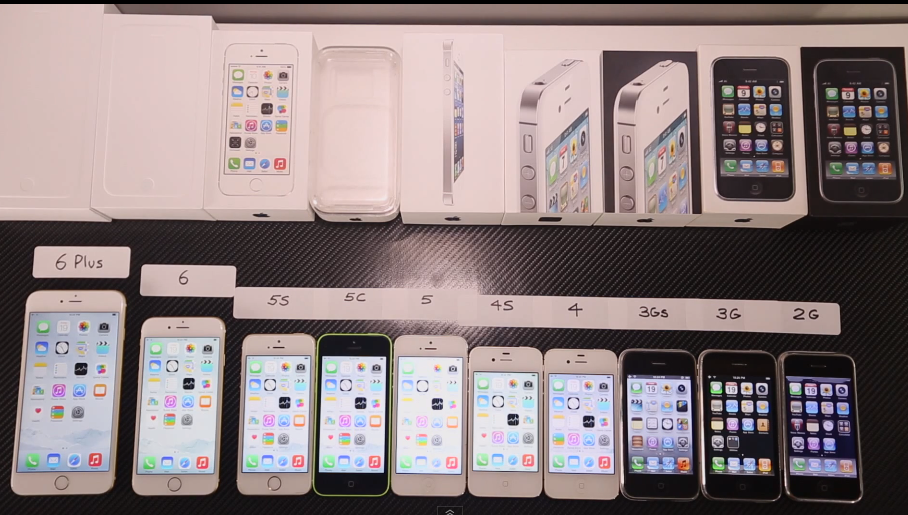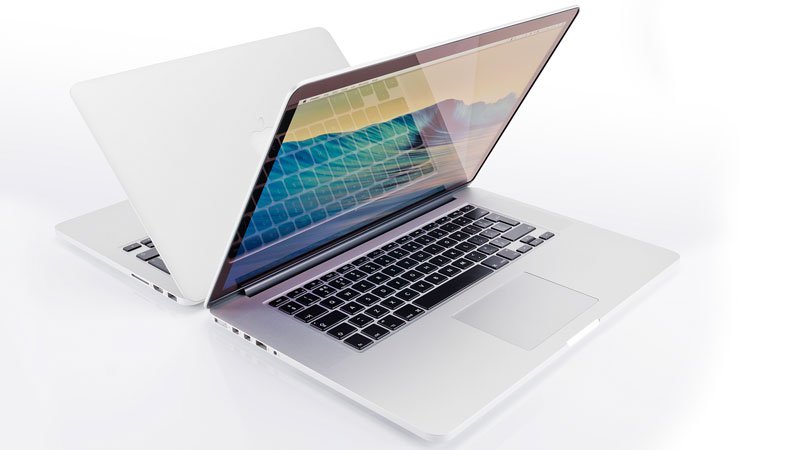UPDATED FEB 2016!
Apple designs and creates top-quality products. This in itself makes the role of advertising for the company that much easier.
Some people will first be introduced to the Apple experience via the iPod or iPhone. For me, my first Apple device was the first generation iPod Nano in 2005. The day 11 July 2008 marked the launch of the iPhone 3G, and this was my next expansion into the world of Apple. The path to purchase had been a no-brainer for me as the iPhone offered the simplification and rationalisation of two devices to one. In October 2008, I took the next step up the Apple product chain, with my first Macbook — at the time, the Macbook was launching with its first unibody model (second generation). I upgraded my Macbook in 2009, 2010, 2012 and most recently in 2015. Over the seven years, I have gradually downsized the screen size of the Macbook laptops, originally using a 17-inch screen. From 2009 through to 2015, I settled for a 15-inch screen but as of April 2015, I have taken the bold step to try a 13-inch Macbook Pro.
In 2010, with the purchase of an iMac, all active household machines were of the Apple persuasion; the former PC devices relegated to the spare room. Since then, the old iMac has been traded in for the Retina Display iMac in December 2012. In February 2016, I completed the sale of this iMac to a good church friend and topped up the sale amount to get a current generation iMac, the late 2015 basic model.
Since the iPhone 3G, I have continually upgraded with each new generation/release, through the 3GS, 4, 4S, 5, 5S and most recently the 6. The iPhone pathway has, since 2013, been challenged with greater choice – whilst the choice between 5C and 5S was a no-brainer, the dilemma between 6 and 6 Plus saw me choose the iPhone 6. With the 6S iteration/release in 2015, I continued down the pathway and have now become accustomed to the iPhone 6S Plus. Later still in the product evolution/journey, when Apple introduced the SE / normal / Pro / Pro Max options, I experimented one year with a Pro Max before settling back to the Pro option.
In this way, my iPhone journey has been a gradual shift in screen size – following the natural product form-factor. Given my smaller hand size, the Pro has always served me well. I know most people adopt an upgrade cycle every 3-4 years, and the changes in screen-size and overall form-factor differences become really obvious whereas my annual adoption has meant the differences were incremental and not as obvious.
My experience is obviously the ideal from the Apple perspective, but they have to be mindful of creating jumps between several years’ worth of older product models which then become perception barriers for customers in upgrading. In 2022, the latest announcements from Apple of introducing a monthly subscription payment model which allows us early adopters to upgrade each cycle is highly appealing, and we are the ideal target market for this latest product innovation.

A less aggressive upgrade pattern was adopted for the iPad, partly because Apple was releasing new hardware every 9 months and to keep up with that kind of lifestyle was ultimately too hard and expensive! For the first 3-4 years, I upgrade and owned each major model/generation release of the iPad, including the short-lived iPad model where the LTE capability lacked Australian compatibility. However, the iPad product family has become quite diverse – iPad Air, iPad Mini, iPad Pro…
Naturally, with the impending announcement of the Apple Watch in 2014, I became an early adopter of the Sports 38mm edition; having pre-ordered it online on the day of launch. Later that same day of launch, I visited the local Apple store to see the display units, test it out and confirm my purchase decision.
Apple products generally hold their value; I have continuously sought to extract the maximum value by selling my Apple device (Macbook / iPhone / iPad) at the first major upgrade announcement. In this way, I have managed to maximise the resell value and minimise the difference in additional cost required to purchase the newer model.
- Year 1
- Spend $3500 on Macbook model 1
- One-third depreciation/deduction on spend — $1100
- Out-of-pocket cost: $2400
- Year 2/onwards
- Sell Macbook model 1 for $2000
- Spend $3500 on Macbook model 2
- One-third depreciation/deduction on spend — $1100
- Out-of-pocket cost: $400
For Year 2 and beyond, whilst the cycle repeats, it can be spread out to ease the amount of spending each year, but this needs to be offset the action 2A whereby the longer you delay selling a device, and the older it gets from the current generation, the lower the value will drop. Generally, Apple Macbooks hold their value quite well, with the main price drops induced by the annual product launches announced by Apple.
Case in point, this model has seen me pay out-of-pocket $600 for the last three years’ worth of use for the current iMac that we own in the household. $600 over three years equates to $200pa – now that is a great deal in my opinion.
Other Apple hardware which I have hands-on product experience in, include:
- Time Capsule
- Airport Express
- AppleTV
Whilst the focus has been heavily on hardware, it should not be overlooked that Apple is also a software developer, with considerable attention on their in-house $1B+ development of OSX. Specific Apple product experience worthy of mention here, with tips and tricks are:
- OS X
- iOS
- Garageband
- iMovie
Some years the Apple season has been really obvious; everyone was upgrading their devices and asking questions. 2021 was a particularly strong Apple year, with the iPhone 13 driving a lot of discussions and my assistance was sought in helping various individuals migrate.



